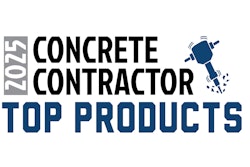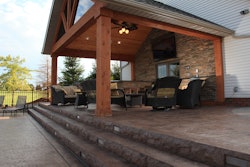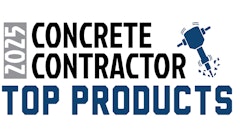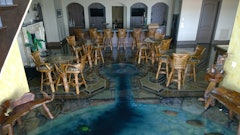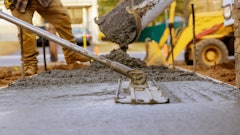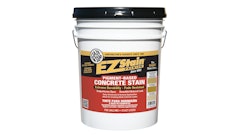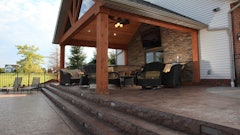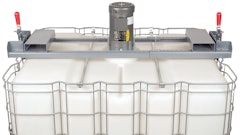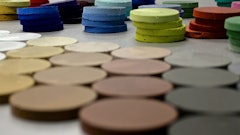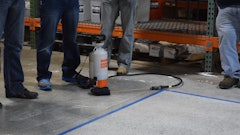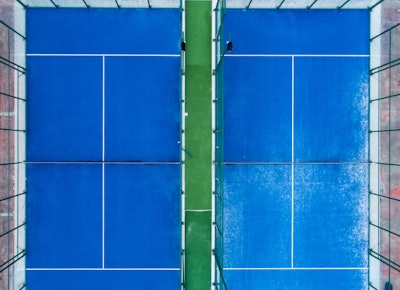
Whether it's Pickleball, tennis, or a multi-use play area, homeowners are beginning to ask contractors a big question: What will it take to build one in my backyard? With the rise of pickleball alone, we have seen search numbers increase by over 300% in the last year. Some are looking to add an area in their driveway, or they have a concrete slab in their backyard that they are trying to get more use out of. Others are starting from scratch and are looking for a dedicated area for tennis or basketball.
Whatever the project, this is a guide for construction professionals to understand the two different options for backyard sport courts. Regulation-Grade acrylic overlay systems and Recreation-Grade decorative coatings. We will discuss the components, tools, surface prep, line stiping, and key talking points for client consultations.
 Solomon Colors
Solomon Colors
Regulation Courts are just that, regulation-grade substrates that use specific acrylic-based overlays to achieve bounce, friction, and resistance. This is achieved using silica sand and specially formulated acrylics. This delivers true hardcourt performance ideal for clients expecting tournament-level ball response and durability. These are applied over structurally sound concrete or asphalt.
Recreation courts are a cost-effective solution and can be achieved using cement-based coatings. They are suitable for casual family use and offer design flexibility for aesthetics and repurposing. With these coatings, you can customize them to be whatever colors you want, which is ideal if the homeowner just wants to repurpose a concrete slab and wants the look of a private court without the pricetag.
Looking at these two systems at a glance, the regulation courts have some clear advantages. They provide bounce and grip, and they are UV and weather resistant. They will also require some additional upkeep to maintain their appearance. They also require some knowledge and experience with acrylic overlay systems to achieve the fit and finish the customer requires.
Recreation courts using cementitious coatings are more approachable from an installation perspective and can provide flexibility with colors and look. The texture of the concrete will be the texture of the final surface, which can be a deal breaker for some. If the concrete is broom-finished or uneven, these will be present in the final product. Where cementitious overlays stand out is their price point. Where regulation courts can cost upwards of $16 a square foot, cementitious coatings can cost between $4-10 a square foot.
Cementitious coatings are different from concrete paint.
Now I need to make this clear: Cementitious coatings are different from concrete paint. Most concrete “paint” is nothing more than acrylic sealer with color in it. You might ask, “Then what's the difference between the acrylic sealer and the acrylic overlay?” The acrylic overlays include silica sand in the mix and are specially formulated to achieve the bounce and friction in the final texture.
Installation Process: Regulation Courts
The first step in any overlay project is surface preparation. For the best results, we recommend the International Concrete Repair Institute (ICRI) Guideline No. 310.2R, Selecting and Specifying Concrete Surface Preparation for Sealers, Coatings, and Polymer Overlays. You should also perform a moisture vapor evaporation rate test in accordance with ASTM F1869 before application.
Some regulation court overlay systems will come with an epoxy primer that will help promote adhesion to the resurfacing material. This will help lock out moisture, allowing for an even dry time of the material.  A multi-use concrete space, before the application of a coating product.Solomon Colors
A multi-use concrete space, before the application of a coating product.Solomon Colors
A regulation hardcourt requires a few separate layers. Depending on the system you can expect 5-6 different layers on top of a sound concrete or asphalt base.
- An acrylic resurfacing layer that is blended with silica sand. This is to even out the surface.
- A Texture layer that provides you with a uniform surface texture. This will provide your bounce and friction.
- A Finish layer, which is your color and your weather-resistant coating.
- Line paint is the last layer, which is a heavy-bodied acrylic latex. This can be textured or untextured.
Tools required for this job include mixing equipment, 24-36-in. rubber floor squeegees, Phenolic rollers for primers, a tape applicator for court striping, and measuring tools. You will also need 60-80 mesh silica sand to mix with overlay materials. Depending on what court overlay system you go with, you might need additional materials — make sure you check the technical information sheet (TIS). (A product manufacturer should have a link on their website.)  Solomon Colors
Solomon Colors
Installation Process: Recreation Courts
Cementitious Coatings require the same level of surface preparation as regulation courts.
Unlike acrylic-based resurfacing systems, cementitious coatings are such that the texture of the concrete will be the same. These coatings go directly over the concrete and do not act as a resurfacing layer. Once the concrete base is properly profiled, you can add a priming agent specific to concrete overlays. Then you can start applying the cementitious coating.
Most cementitious coatings can be applied with a paint roller, but some can be applied with an airless sprayer for larger jobs. To achieve even coverage, expect to apply 2-3 coatings. When dry, you can move on to the line striping.
Using a stippling tape applicator, lay out your lines and apply masking tape. Roll your product between the tape and then peel before a full cure.
Cementitious coatings need to be sealed to ensure longevity and protection. Any decorative concrete sealer will work, but we recommend sticking with something that has a good quality acrylic. If the homeowner wants something that is less glossy or slip-resistant, you can use a matting agent or traction grip in the sealers. Alternatively, you can go with a hybrid sealer like a silane/siloxane. Always read the TIS information to see what sealers are compatible with the overlay material.
Understand system specs and tailor each recommendation to the client's expectations and budget.
Tools required for cementitious coatings include mixing equipment, 3/8 to 3/4-in. nap rollers, line tape and applicator, and a good quality sealer. Depending on how you apply the sealer, you will also need a good-quality sprayer.
Whether installing a regulation-grade acrylic court or a decorative cementitious coating, a professional approach to surface prep, application, and line marking will ensure success. Understand system specs and tailor each recommendation to the client's expectations and budget.
With the right prep, both of these systems can turn a backyard into a standout recreational space that will last for years.






